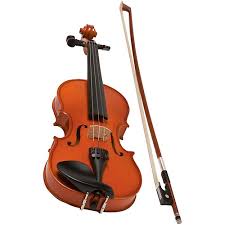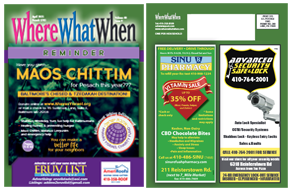
Jews will do anything to celebrate simchas, even if it means creating a “drive-by” bar mitzvah, like the one my nextdoor neighbors planned for their son during the pandemic. Wearing his new black hat pushed back on his head and a personalized tee shirt, the star of the simcha stood behind a table in front of a balloon arch. As cars passed by, his parents gave out bags of wrapped sweets and mini-monogrammed basketballs. The boy’s friends jumped out of cars and ran up to the table to briefly wish their classmate mazel tov and, with an individual Sharpie, sign his board. When we walked out of our house, the bar mitzvah boy ran over and, from several feet away (maybe it wasn’t six, but only for a few seconds), he handed us a bag of those sweets. His face was shining.
Besides bar and
bas mitzvah drive-bys, some parents gave a walk-by Shabbos kiddush for their
newborn daughter or a drive-by vort to
celebrate the engagement of their child. As for weddings, many were held in
backyards, with grandparents dressing up at home to watch the festivities on
Zoom. It was definitely wonderful to see a chuppa on Zoom, but it was not the
same as being there.
Simcha Gross,
of O’Fishel caterers, says that Zoom is still an option for people who are okay
with smaller weddings to enable those not present, such as second cousins, to
view the affair. He sees Zoom as a positive option for more people to
participate. “Real photographers are manning the cameras now,” he says. “They
know how to get the right angle.”
*
* *
One of the first weddings I saw on Zoom, at
the beginning of the pandemic, took place in a lush meadow in Atlanta with very
few guests. For the bedeken, the
kallah sat on a decorated chair with her mother beside her and future
mother-in-law, socially distant. Both were wearing masks. Escorted by his
father and future father-in-law, the chassan walked through the grass towards
his kallah. No group of friends followed dancing and singing. He lifted the
veil over her face and walked away. Even viewing all of this on my computer,
the scene had beauty because a Jewish couple was about to marry with hopes of
building a bayis ne’eman b’Yisrael.
But I missed being present at a lively bedeken.
I missed the
excitement building up as the men, singing, dance down the hall. I missed
watching the chassan march in with his father and father-in-law at each arm, a
band playing loudly, and behind them, a group of men singing at the top of
their lungs. I missed squeezing in among a crowd of women trying to catch a
glimpse of the moment when the couple saw each other for the first time in a
week! The joy of that moment at the bedeken,
a tradition passed down from one generation to another, is precious.
During the
pandemic, before vaccinations, I attended two family weddings in person. Baruch Hashem, my husband’s
granddaughter was married in November, and my granddaughter in December.
Although I was masked, I felt joy at each bedeken,
but I was nervous sitting next to others during the chuppa. I wore my mask
practically the entire chasana,
except when eating,of course. Dancing, holding hands with others, was out of
the question. Yet, I couldn’t resist whirling around with the kallah in the
center of the circle, feeling a glow of happiness bubble inside me. Then I washed
my hands, but I kept the feeling alive.
*
* *
Simcha, in Hebrew, means elevated joy or happiness.
Years ago, I attended a class led by Rabbi Emanuel Feldman, Rabbi Emeritus of
Congregation Beth Jacob in Atlanta. He stated that it’s a mitzvah for a Jew to
always be happy. I shook my head and asked, “What about Tisha B’Av?”
“You can be
less happy,” my Rav answered.
So when we
decrease joy, we still have a sense of simcha, just less of it in the month of
Av. Out of 12 months a year, only one is singled out as less happy. Interestingly,
one of the happiest days in the Jewish calendar also occurs in Av. On Tu B’Av,
the 15 of Av, many events happened: Death ceased for the generation in the midbar; the tribe of Binyamin was
allowed to intermarry with the other tribes; the blockades Yeroboam had placed
on the roads to prevent the Israelites from going up to Yerushalyim were
removed by Hoshea Ben Elah; the cutting of the wood for the altar was done; and
permission was finally given by the Romans to bury those slain at Beitar.
According to
the Book of Our Heritage, by
Rabbi Eliyahu Kitov, translated from the Hebrew by Rabbi Nathan Bulman,
in earlier generations, the day was similar to Yom Kippur in that it brought
joy because sins were forgiven. And since Israel was forgiven for all
transgressions, it was an appropriate day for weddings or what might lead up to
them. This is why the daughters of Yerushalyim went and danced in the vineyards
outside the city wearing borrowed clothes, perhaps so that no one would seem
richer or poorer. There, the single men went out to find a wife. So it became a
day filled with great happiness.
*
* *
Every Jewish bookstore has self-help books
on happiness. One of the first – perhaps the very first – was written by Rabbi
Zelig Pliskin, who grew up in Baltimore and attended Talmudical Academy (TA). Gateway
to Happiness, published in 1983, is a classic. The red cover of my copy is
torn half way from the spine, In the 80s, every week, Rebbetzin Miriam Feldman,
daughter of Rabbi Shmuel Yaakov Weinberg,
zt”l, and Rebbetzin Chana Weinberg, a”h,
invited women to her home to study this classic with chapters such as “Happiness
Is an Obligation,” “Living in the Present,” “Peace of Mind,” “The Joy of
Mitzvos,” and many others. In another article for the Where What When, I wrote about my experience of teacher burnout. After
attending Rebbetzin Feldman’s group sessions on Gateway to Happiness, I
overcame the burnout and went on to teach another nine years.
In the preface
to his book, Rabbi Pliskin describes chapter three, “Happiness Is Dependent on
your Thoughts” as the most important. He recommends reading it over and over. Rabbi
Pliskin states that a person doesn’t have complete control over his thoughts,
but through effort he can improve his reaction to them.
But is it
possible to be happy all the time?
Lately, we’ve
been hearing shocking news, such as the collapse of a condominium in Miami
where many people perished. How are we supposed to be happy while mourning a
tragedy? Several years ago, as families in Far Rockaway were preparing for
Shemini Atzeres, they heard of a tragic car crash where an engaged couple were
killed. They weren’t feeling like dancing on Simchas Torah. Mrs. Zahava
Farbman, MSW, Ph.D. candidate, who posts daily inspirational emails
(SoulSisters@AteresShimon.org) comforted them. She said that a person can have
simultaneous emotions. In a community conference call, she assured everyone,
“You can be sad and happy at the same time.” And that’s how they danced on
Simchas Torah.
The secret to
conscious happiness according to Harav Gamliel HaKohen Rabinovitch, in his book
The Essence of Simcha: Vital Insights on the Torah Approach to Simchah and to
Life, translated by Rav Yaakov Montrose (Maadanei Levi Institute) is found
in Tehilim 100: “A psalm of thanksgiving: Call out to Hashem, everyone
on earth. Serve Hashem with gladness, come before Him with joyous song. Know
that Hashem, He is G-d, it is He Who made us and we are His, His people and
sheep of His pasture. Enter His gates with thanksgiving, His courts with
praise. Give thanks to Him; bless His Name. For Hashem is good, His kindness
endures forever, and from generation to generation is His faithfulness.
(Translation from The ArtScroll Tehillim).
Give thanks to
Hashem; bless His name. For He is good. In the last few years on the top of
many wedding invitations is the inscription: “With gratitude to Hashem yisborach.”
That message to thank Hashem is felt even more since vaccinations have enabled
us to attend and experience happiness at weddings and other simchas.
*
* *
There’s definitely a flurry of simchas
happening. Parents making a kiddush for baby girls who are already six months
old are vying with bar mitzvah boys from last year who want to lein
their parsha again with a shul kiddush. Although there’s pressure to get prime
dates, he says “people are much happier.” At kiddushes and weddings, he sees
people hugging each other and states, “It’s a lot more exciting to spend time
with people you’ve missed for a year.”
I missed dancing
with friends. Recently, at Ateres Elka, I stood watching women dance around a
kallah, their faces lit up in joy. A friend next to me said, “It’s hard getting
back into this.” I shook my head in agreement. After almost a year and a half
of social distancing, holding hands to dance at a chasana takes courage.
Suddenly, though, someone broke the circle and grabbed my friend’s hand.
Another woman grabbed mine, and we were once again dancing at a simcha.
It felt good.






